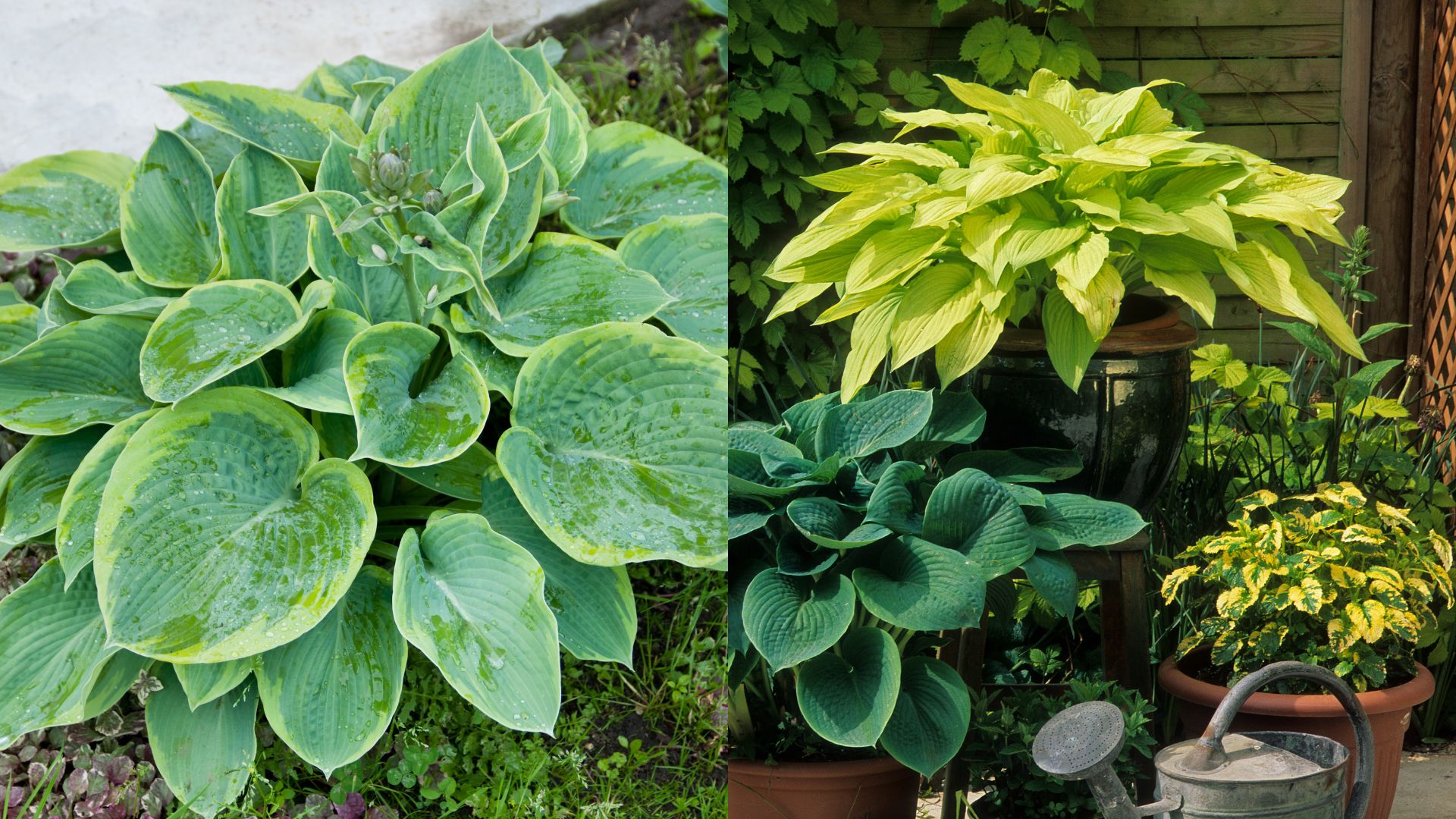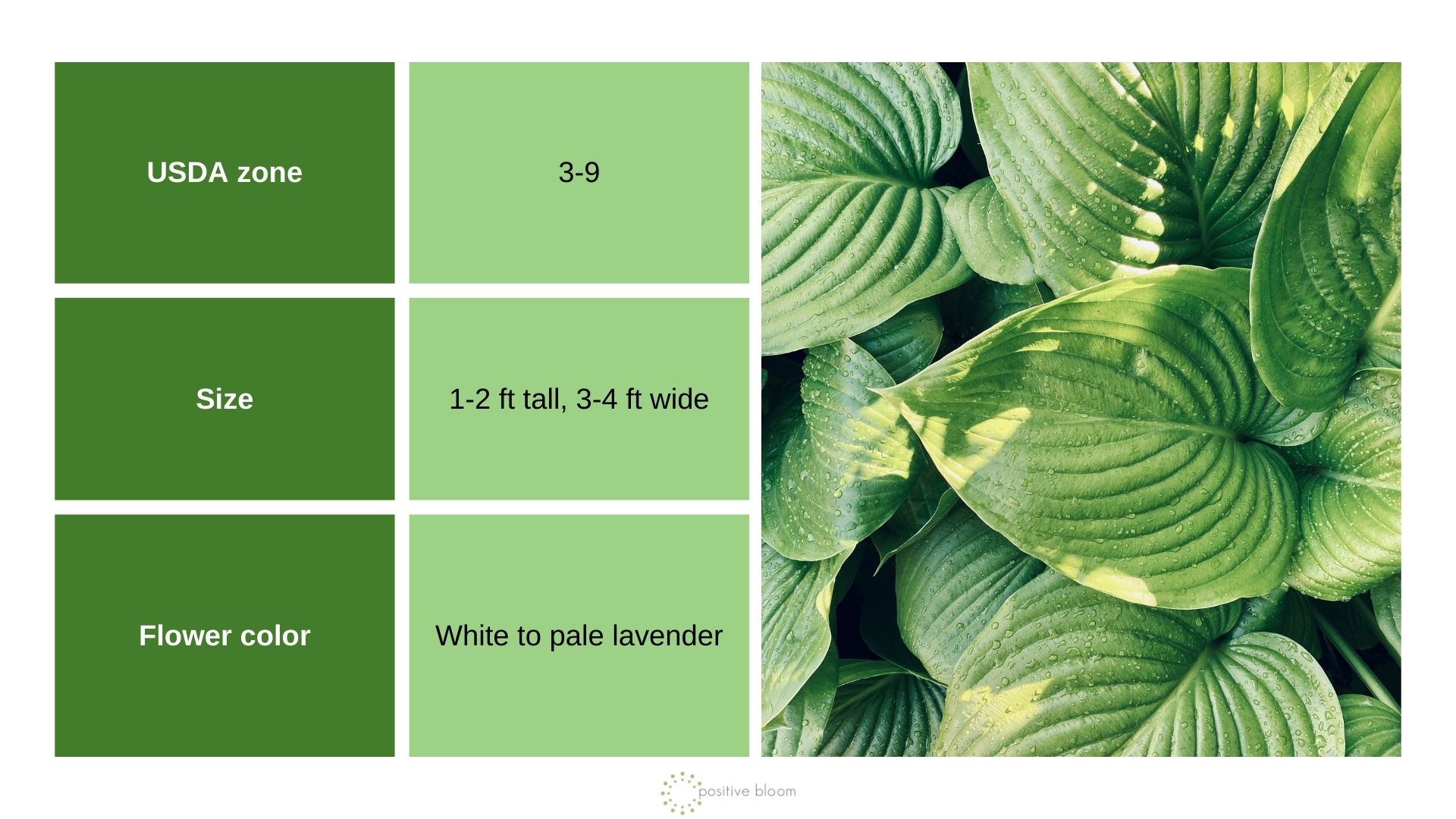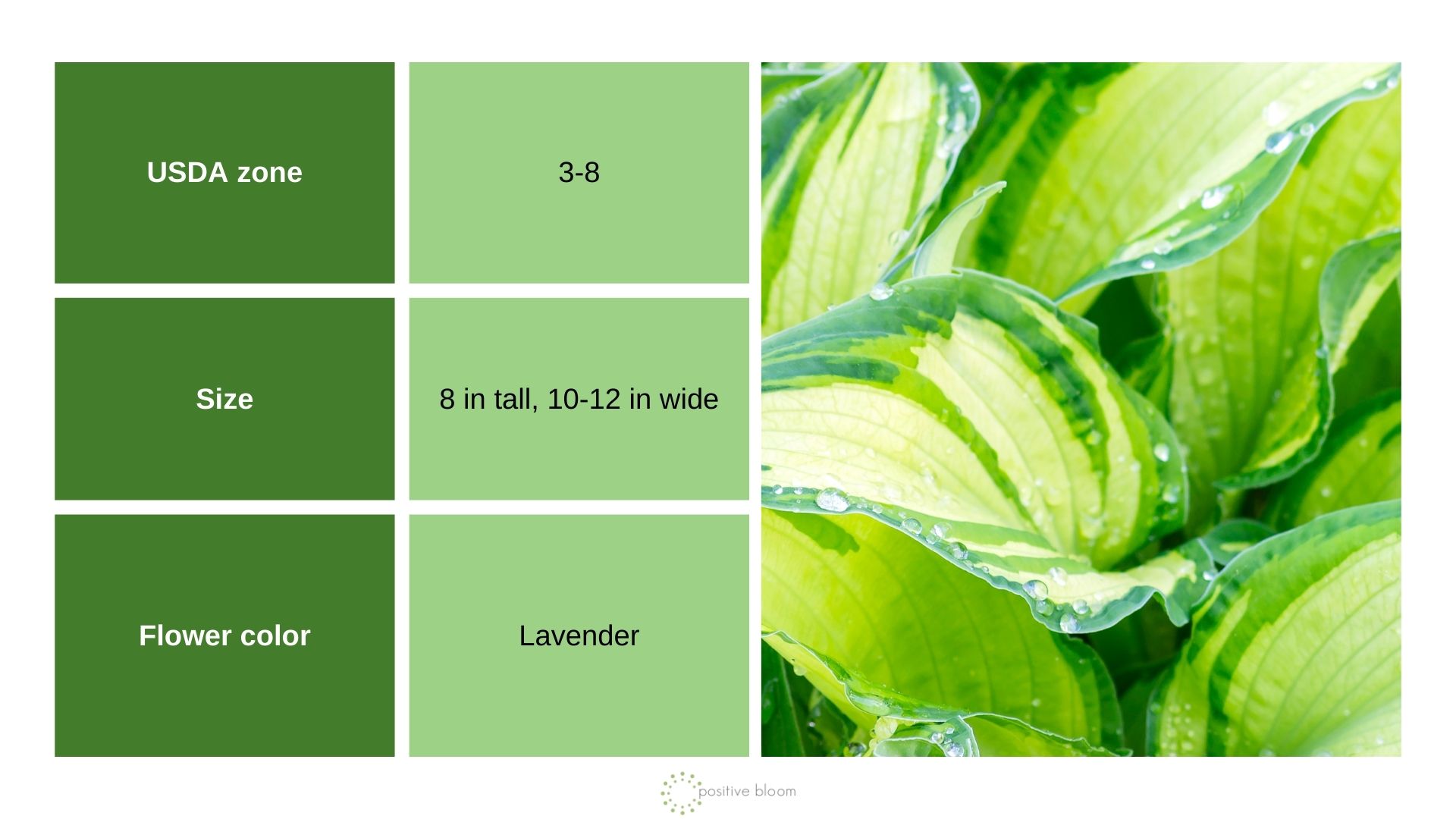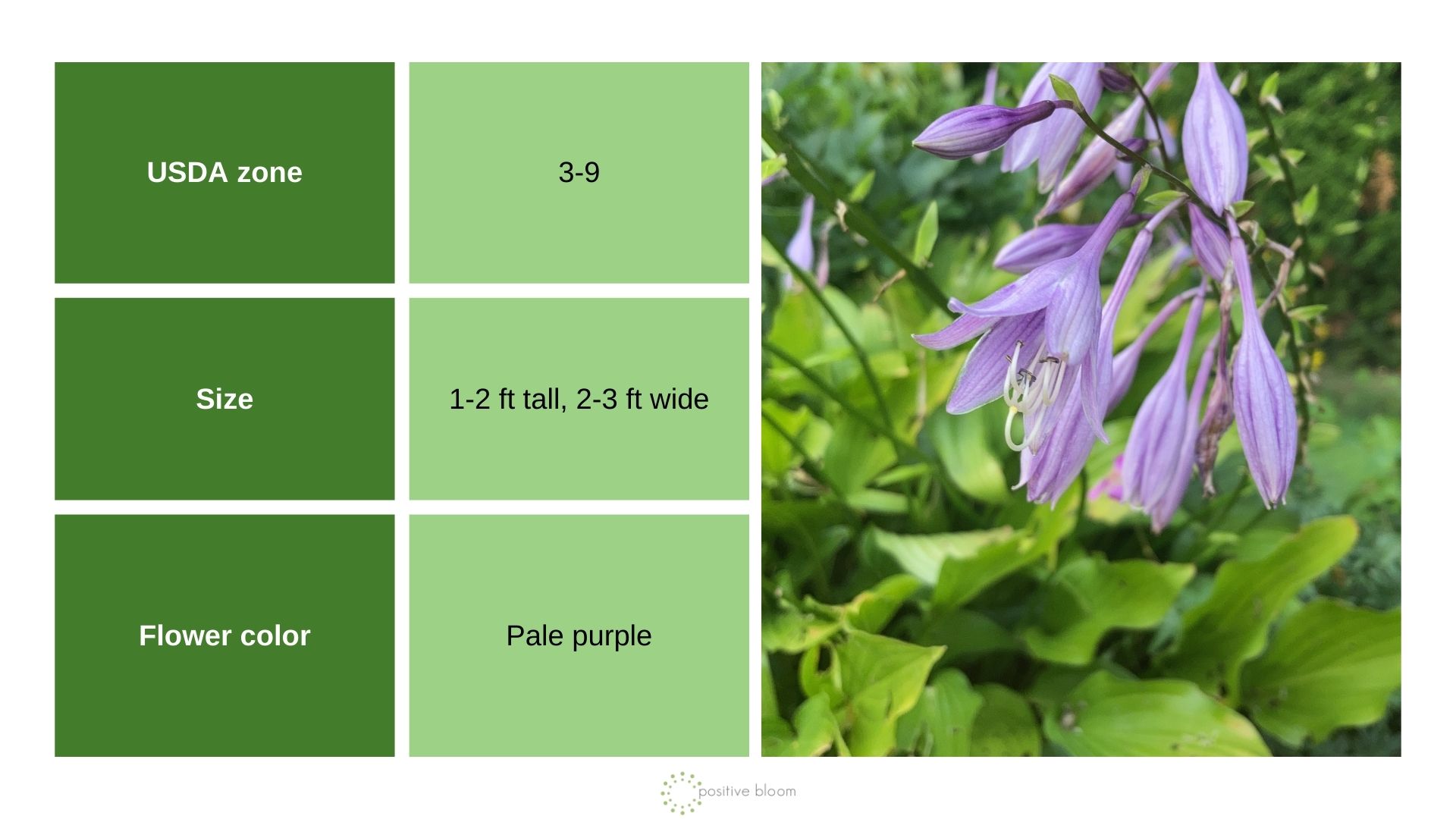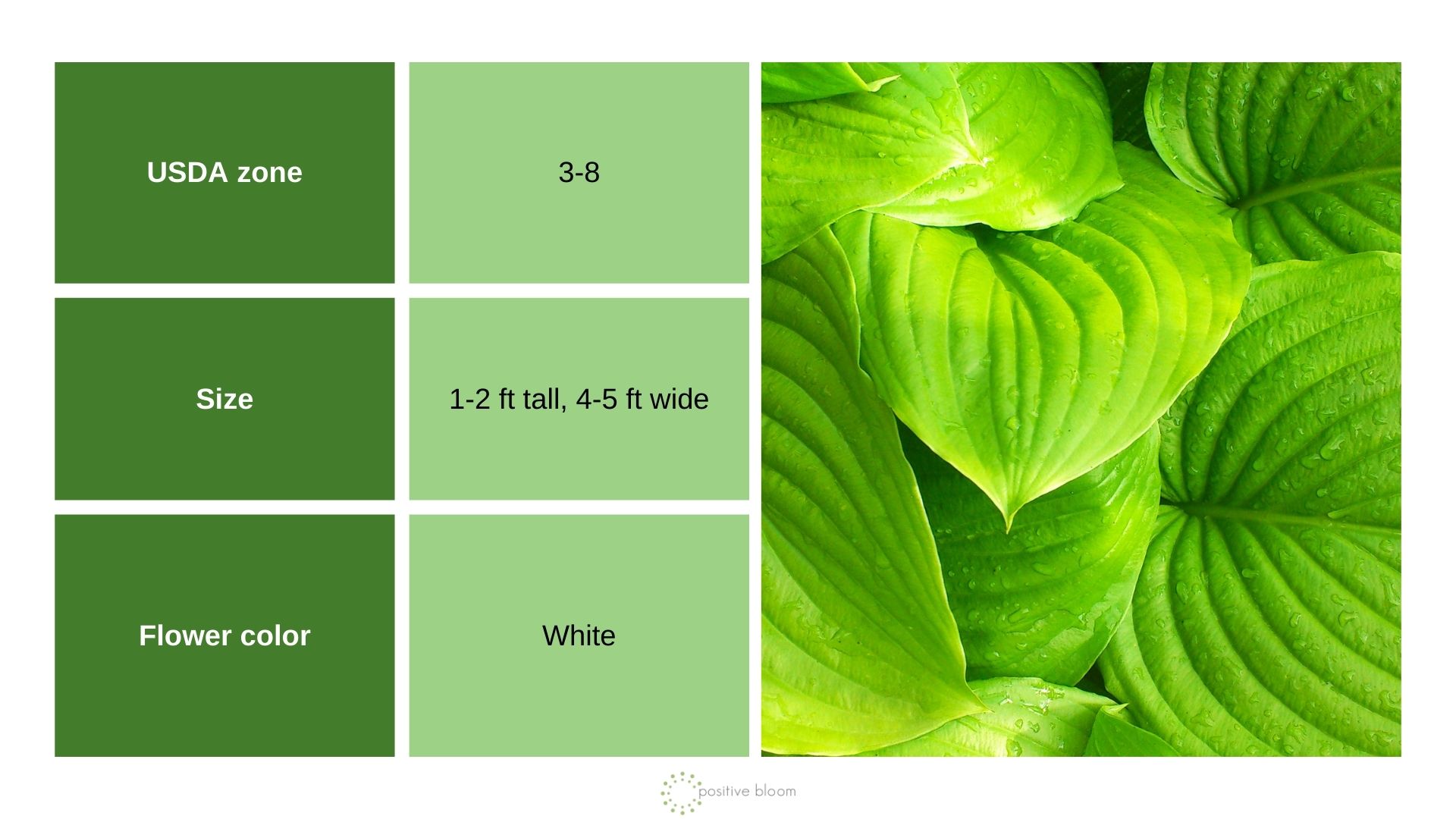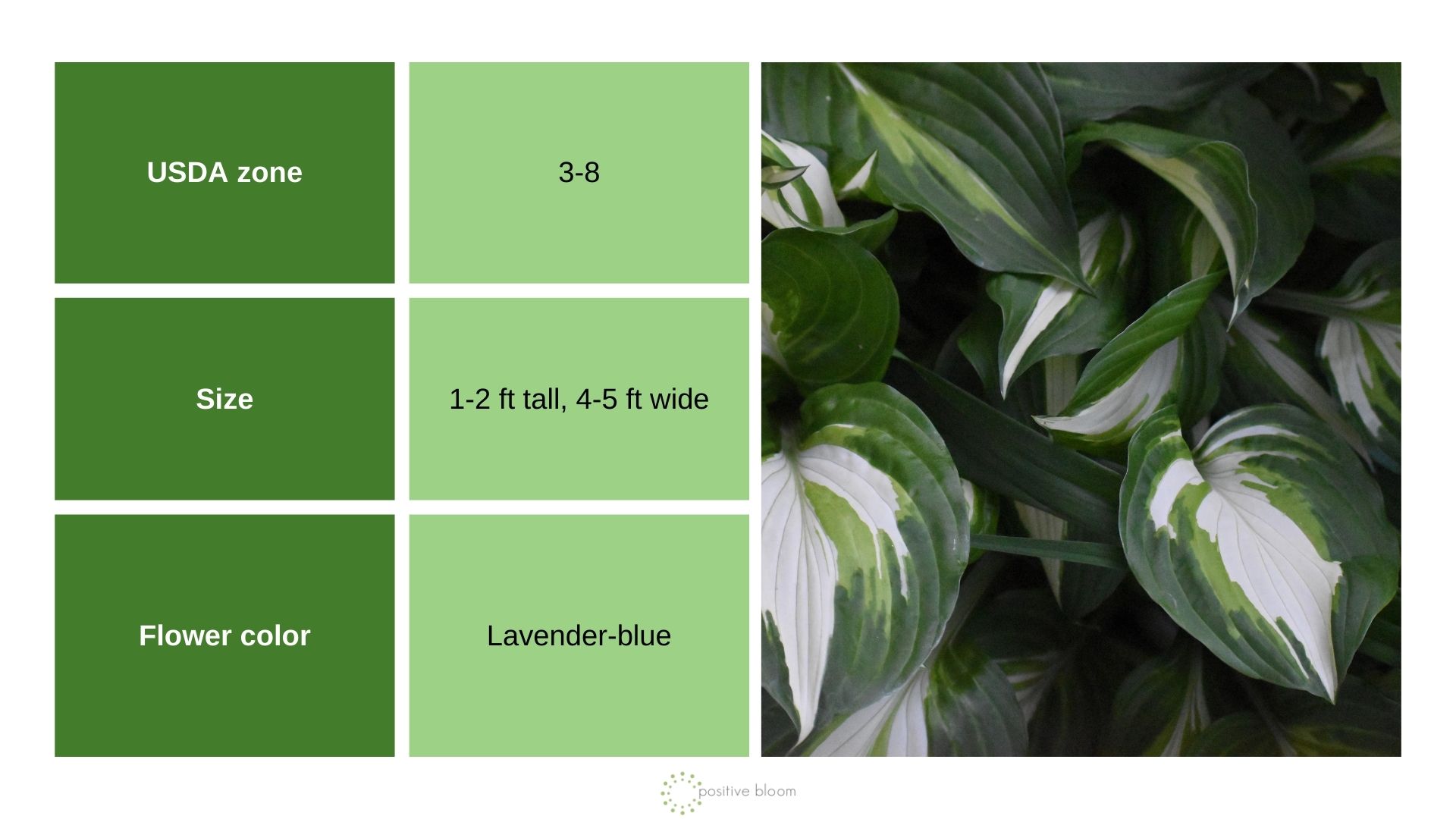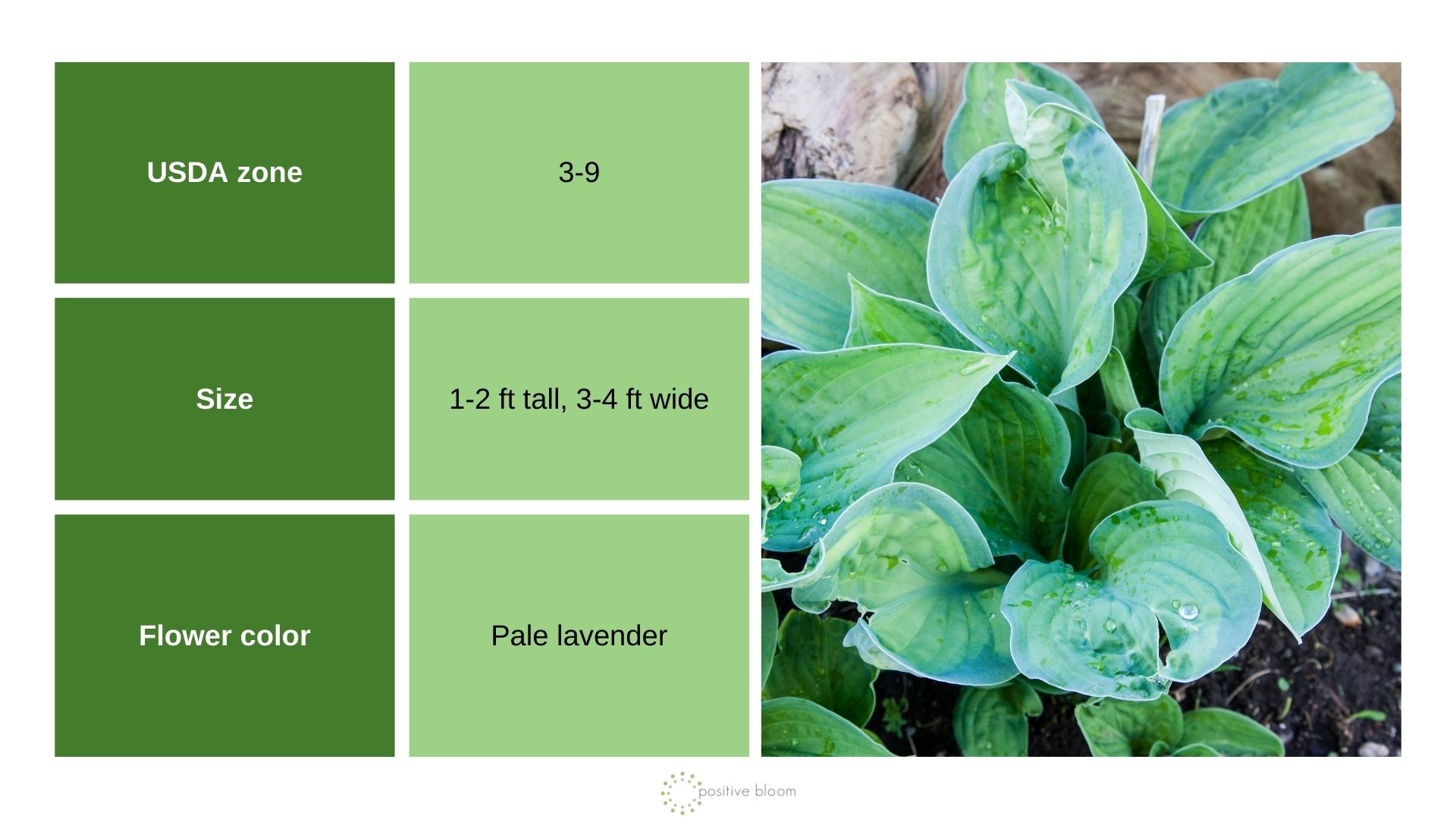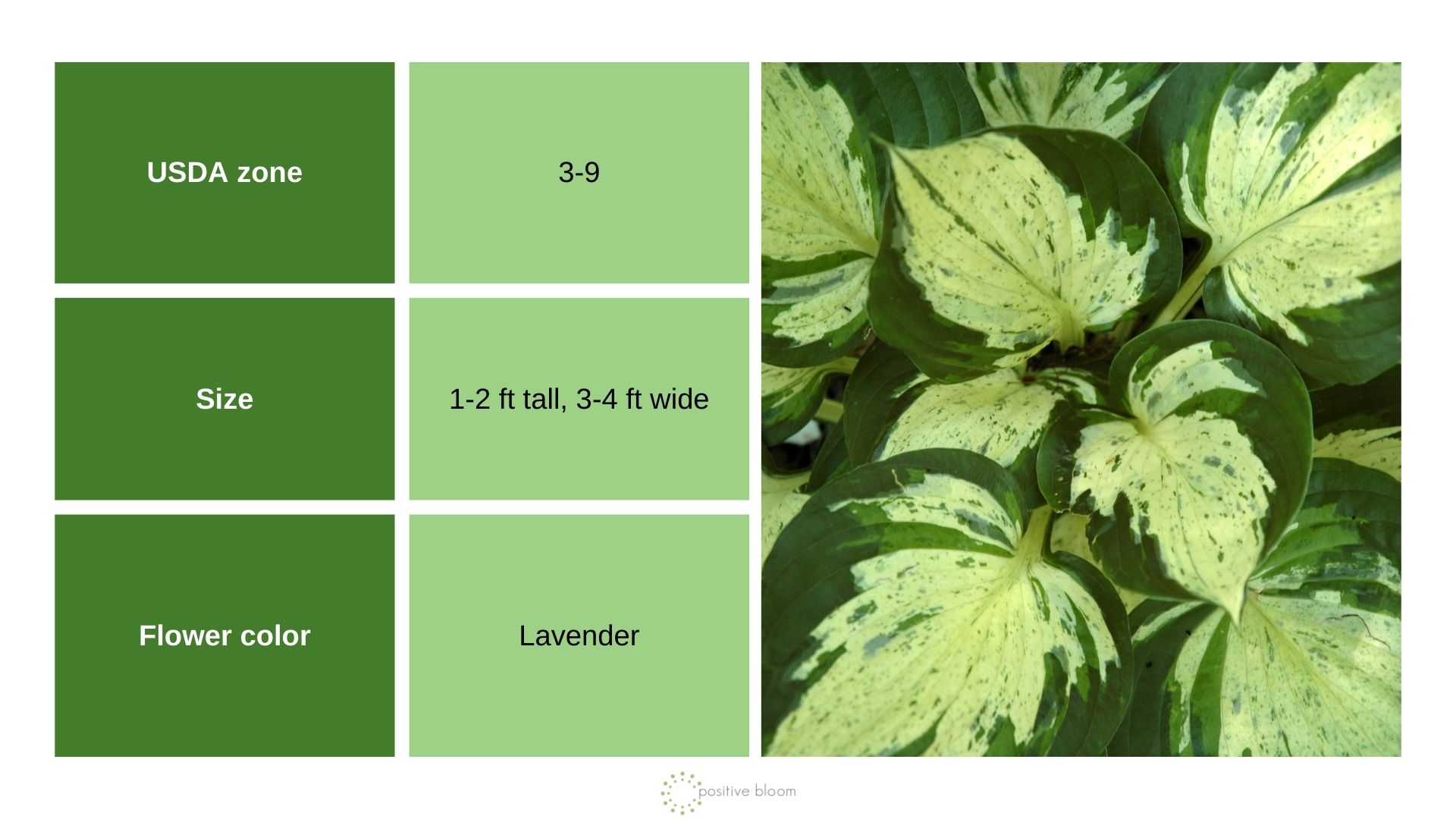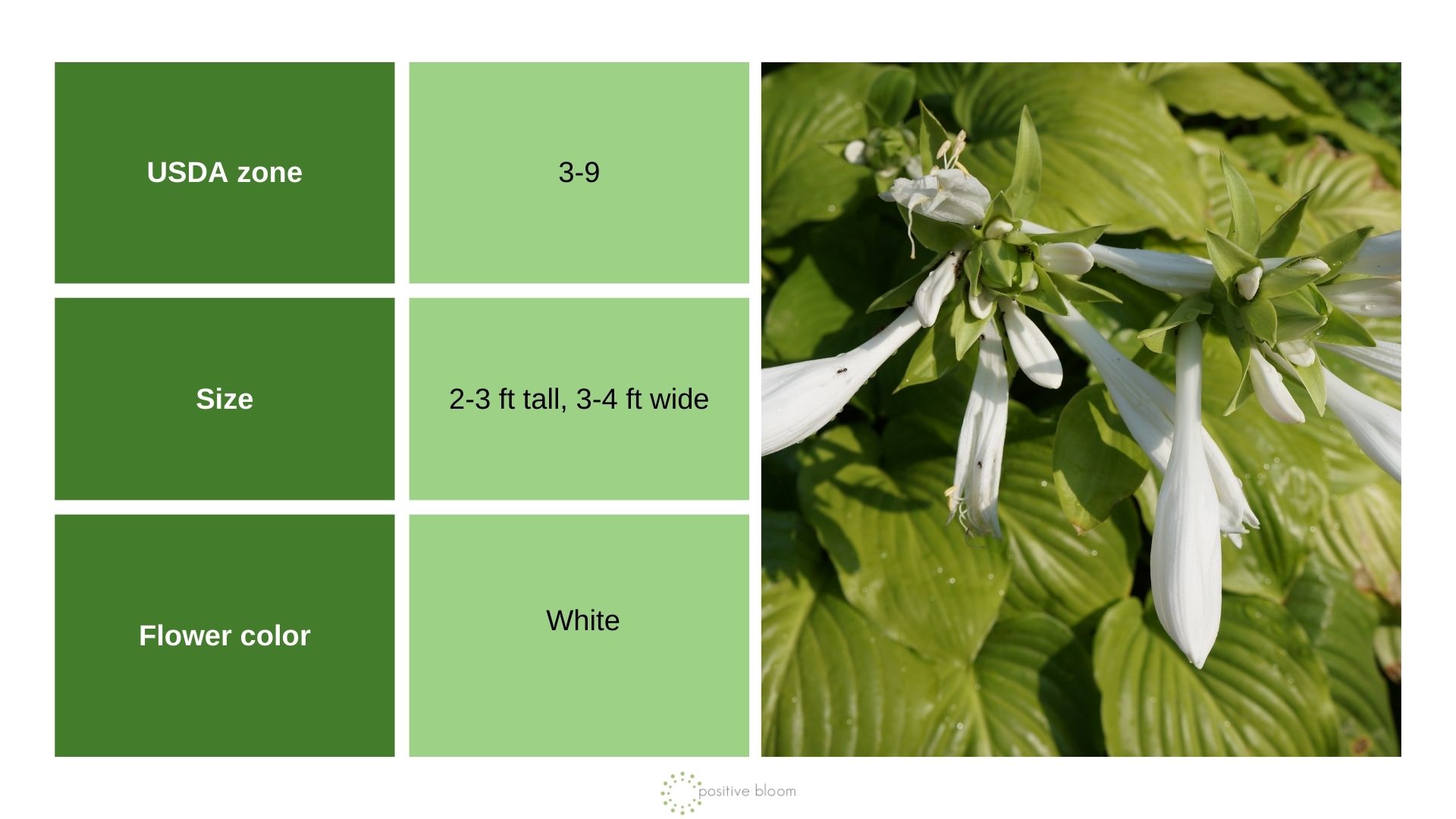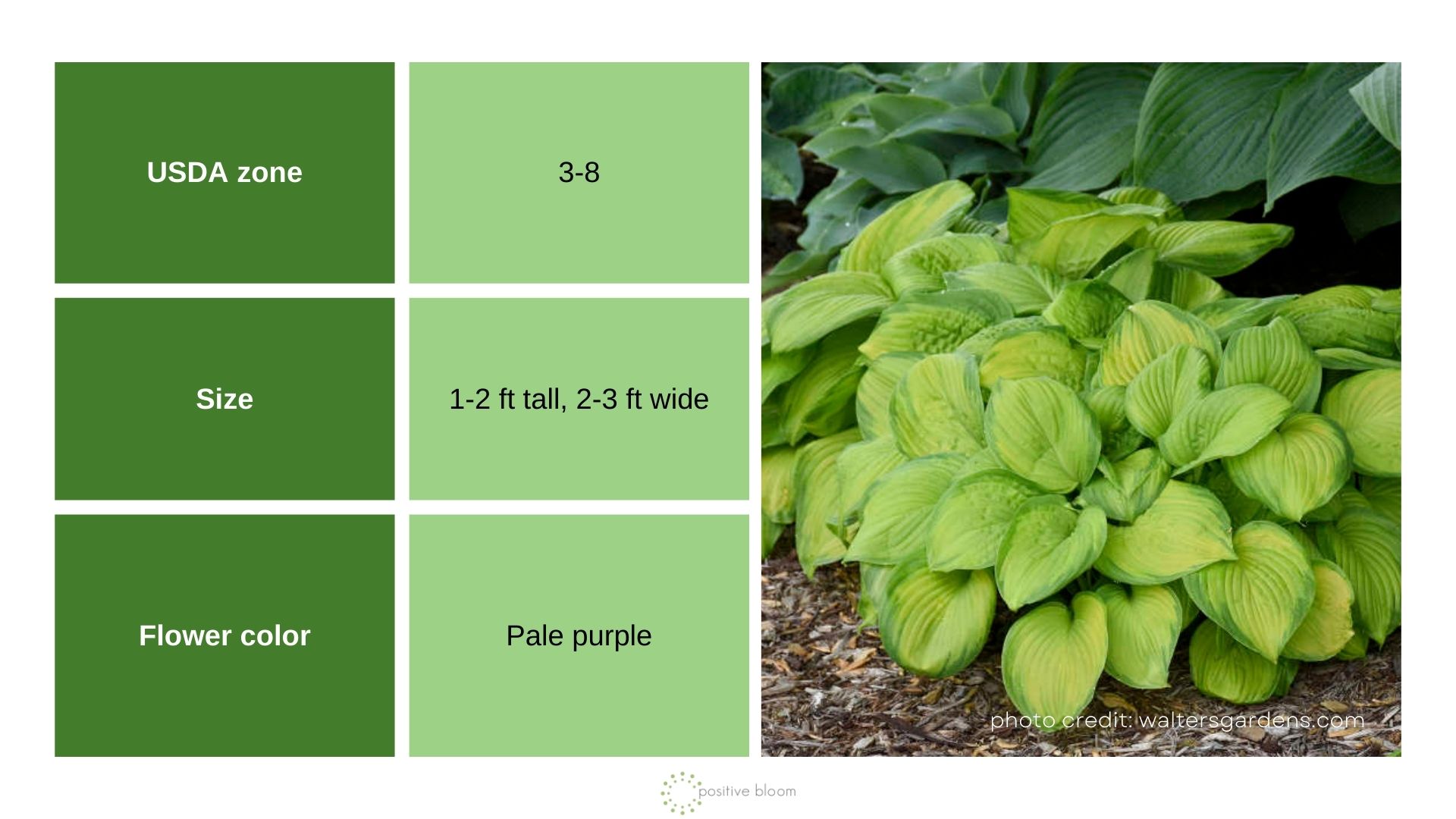We all love hostas because of their ability to tolerate shade. But what about our sunny patches?
Did you know that there are hostas that can tolerate the sun quite well? In fact, they thrive in bright locations.
And the best part is that they all look amazing! You can go for all green or variegated varieties.
Below, you can find ten options that made the cut. Of course, there are more sun-tolerant hostas, but these are the ones that caught my eye.
Let’s get started!
#1 ‘August Moon’
Light-green hostas tend to do well in sunny conditions. And the ‘August Moon’ is no exception.
This plant forms an asymmetrical mat and doesn’t need a lot to spread. Plant it in a fertile and well-draining soil, and it will flourish.
You only need to remember to water it more if you expose it to full sun. This plant grows best when it gets about 4-5 hours of direct morning sunlight. So, don’t be afraid of sunny locations. Your landscape will thank you.
Pro tip: There are some things to do with hostas before winter that even this sun lover needs. Pruning is one of them.
#2 ‘Fire And Ice’
This award winning hosta will do a lot for any sunny garden spot. It brings more character to your landscape all year long.
‘Fire and Ice’ produces tubular, lavender-colored flowers in summer. Yet, it’s the foliage that is the real winner. Green margins frame creamy or snow-white leaves, forming an attractive mound.
‘White Christmas’ is another variety like ‘Fire and Ice’ that thrives in sunny places. You can combine them to give your garden more interest.
Remember to plant this hosta in nutrient-rich, moist, and well-draining soil. And keep it in full sun or dappled shade for the best results.
Pro tip: The compact size makes this hosta ideal for containers. Yet, you can use it as a border plant, groundcover, or plant it underneath trees or shrubs.
#3 ‘Fragrant Bouquet’
If you want a fragrant hosta that can thrive in sun or shade, then ‘Fragrant Bouquet’ is your guy.
To get the best variegations and most abundant flowers, keep this perennial in full sun.
Pale purple flowers emerge in summer, and that’s when the magic happens. But even when not in bloom, ‘Fragrant Bouquet’ has its charms.
Its deep green leaves, framed with creamy margins, look amazing year round.
Like any other hosta, this one likes fertile, moist, and well-draining soils. And it can tolerate clay substrates like a champ.
Finally, make sure to protect it from harsh and drying winds. Irrigate it often if you keep it in full sun. All hostas need moisture, and this one is not an exception.
#4 ‘Guacamole’
This bright green hosta features darker green margins. They look amazing in full sun locations. However, you should only expose them to plenty of sun in colder regions.
If you live in warm climates, shade during the hottest parts of the day is preferable. So if you’re wondering why your hostas have turned yellow, excess sunlight may be the reason.
‘Guacamole’ is perfect for groundcover. That’s because it spreads more than other hostas on this list.
And if all this isn’t enough to encourage you to get yourself a ‘Guacamole,’ here’s another thing. It produces white funnel-shaped flowers in the summer months. They exude a gorgeous fragrance when they open!
Pro tip: Hosta ‘Guacamole’ is more suited for colder climates. In lower zones, you can keep it in full sun, but not in warmer ones.
#5 ‘Patriot’
I know we all love white leaves. But hear me out! Deep green foliage with white margins! Isn’t that a dream you never thought of before?
And the lavender-blue flowers in summer are only icing on the cake!
‘Patriot’ has a moderate-to-fast growth. This means it will fill your landscape without any trouble. And since it spreads far and wide, it makes for an excellent ground cover.
This hosta will add a lot of color to your garden throughout the year. And the best part is that it can tolerate all light levels, from full sun to full shade.
Plant this clump-forming perennial in rich, moist, and well-drained soil, and it will flourish.
#6 ‘Paul’s Glory’
The dense mound this hosta forms is out of this world. Deep green leaves splashed with chartreuse stains in the middle – what more could we wish for!
And if that’s not enough, ‘Paul’s Glory’ sends out pale lavender flowers in summer. That’s when the dramatic impact reaches its peak!
It can also help you fill your garden with life because it attracts birds and hummingbirds.
However, it’s not as suited for sun as some other varieties. It does best in shaded locations.
But there’s a solution! Keep it in sunny spots in colder climates, and it will thrive.
Pro tip: Due to its love of shade, ‘Paul’s Glory’ hosta is an excellent choice for underplanting shrubs and trees.
#7 ‘Revolution’
Deep green foliage and creamy variegation in the middle is all you need to lift up your landscape.
And once subtle lavender flowers show up in summer… It’s safe to say, they’ll leave you speechless!
What many gardeners love about this hosta is that it can thrive in both sun or shade. Of course, it’s still a great idea to protect it from the harshest afternoon light.
Finally, keep watch for slugs. They can nibble on your hosta’s foliage and ruin its appearance.
Pro tip: Hostas are one of the perennials you should divide in fall. Don’t forget to separate your ‘Revolution’ once you notice its center dying out.
#8 ‘Royal Standard’
The deep green foliage of the ‘Royal Standard’ hosta made me think this variety only thrives in shade. But that’s not the case!
This cultivar can flourish in sunny locations, too. Of course, you can only expose it to full sun in colder climates, but it’s still something.
Plant it in nutrient-rich, moist, and well-drained clay or loamy substrate. Do these things, and the plant will reward you with deep shades and plentiful flowers.
Speaking of blooms, those that ‘Royal Standard’ produces are highly fragrant. They will attract pollinators and your neighbors in an instant.
Pro tip: Mulch this hosta in spring to reduce its watering needs.
#9 ‘Stained Glass’
This award-winning cultivar has everything your landscape needs. The pale green foliage margined and splotched with darker variegations is stunning, to say the least.
Pale purple tubular flowers appear in summer. They not only add more visual interest, but also attract bees and hummingbirds.
The ‘Stained Glass’ hosta grows best in full sun, but can tolerate some light shade. Plant it in a rich, well-draining, and moist substrate, and that’s it.
Since this variety doesn’t spread too wide, you can add it to your perennial garden. Or use it as a border plant. It works great in both settings.
#10 ‘Vulcan’
Did you know that hostas are some of the best plants to grow in clay soil. The ‘Vulcan’ cultivar is no exception.
Make sure that the substrate is well-draining. Do this and your plant will grow pretty much anywhere.
‘Vulcan’ is perfect for shade and woodland gardens, especially in warmer climates. Yet, if you live in cold regions, you can expose this hosta to as much light as possible.
Pro tip: Protect your ‘Vulcan’ hosta from slugs and cold and harsh winds. This will ensure its health throughout its lifetime.
Bonus Variety: Dwarf Hostas
Dwarf hostas aren’t just one variety. This category comprises many cultivars.
Yet, a lot of them thrive in sunny locations. ‘Marrakech,’ Blueberry Tart,’ ‘Silver Threads and Golden Needles,’ and ‘Coconut Custard’ are all suitable varieties.
Of course, this doesn’t mean you should allow these plants to fry in the sun. Give them more water than you normally would and mulch them with organic materials.
Also, well-draining clay or loamy soil is a great planting option in this situation.
Many gardeners decide on dwarf hostas. They are more compact and won’t spread all over your yard.
You can even plant them in containers. This is ideal for apartments, small gardens, and yards with limited space.

